Two Cruise driverless taxis BLOCKED ambulance carrying car crash victim in San Francisco – before they later died in hospital
Two driverless Cruise taxis blocked an ambulance carrying a critically injured car crash victim, who later died in hospital.
Firefighters said two of the self-driving cars stalled, delaying the ambulance on Aug. 14 as the automated cars shut down.
The pedestrian, whose identity remains unknown, had been hit by a car on Harrison and 7th Street and was bleeding profusely from “significant left lower extremity injuries.”
According to the fire department, when crews arrived on scene, the only lane they could use was blocked by two cruisers that had stopped moving, causing delays.
In response, the company hit back at the fire department, saying they were not responsible for the delay, the latest in a string of problems for self-driving cars, including a car colliding with a fire engine.
San Francisco Fire Department records show two automated cruise taxis, pictured here, delayed an ambulance carrying a car accident victim
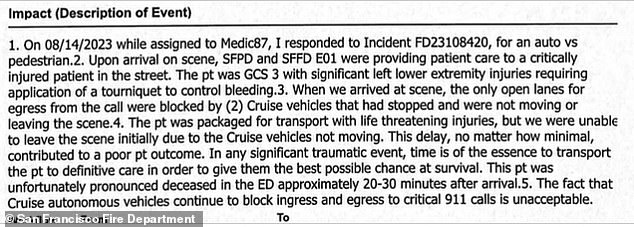
Records from the San Francisco Fire Department, pictured here, show they were unable to leave the scene because of the automated vehicles
The records state: ‘When we arrived at the scene, the only open lanes for exiting the call were blocked by two cruise vehicles that had stopped and did not move or leave the scene.
“At first we couldn’t leave the scene because the cruise vehicles weren’t moving. This delay, however minimal, contributed to a poor outcome for the patient.
“With any significant traumatic event, time is of the essence to get the patient to definitive care so that he or she has the best possible chance of survival.”
The data also shows that the patient died approximately 20-30 minutes after arriving at the hospital.
The contribution closes: “The fact that Cruise’s autonomous vehicles continue to block the incoming and outgoing of critical 911 calls is unacceptable.”
In response, the company refuted the fire department’s account of what happened on August 14.
The company spokesperson told DailyMail.com: ‘On August 14, two Cruise AVs encountered an active emergency at an intersection where a pedestrian had been struck by a human-operated car.
“The first vehicle immediately leaves the area as soon as the light turns green and the other vehicle stops in the roadway to give way to the first responders directing traffic.
“For the entire duration that the AV is stationary, traffic remains free and flows to the right of the AV.”
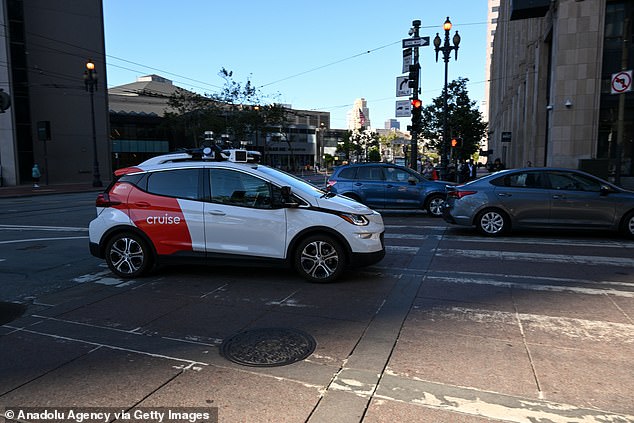
In response, the company refuted the fire department’s account of what happened on August 14
The statement continued: ‘The ambulance behind the AV had a clear path to pass the AV, while other vehicles, including another ambulance, did so.
“As soon as the victim was loaded into the ambulance, the ambulance immediately left the scene and was never hindered by the AV.”
Footage shared by the company with the New York Times allegedly showed one of the vehicles moving away from the scene and other vehicles, including an ambulance, passing the Cruise taxi.
Cruise has refused to release the video publicly because of “proprietary information” it contains.
Chief of the fire department Jeanine Nicholson told the newspaper: “I have not yet seen Cruise take responsibility for anything.”
San Francisco Board of Supervisors Chairman Aaron Peskin also told the Times that regardless of the cause of the victim’s death, the number of self-driving car incidents was alarming.
Peskin said, “They all have a common theme: autonomous vehicles are not yet ready for prime time.”
It comes after General Motors announced they would cut its cruise car fleet by half after one crashed into a fire truck.
On August 21, the cruise vehicle was given a green light, entered an intersection and was hit by the emergency vehicle responding to a call.
The week before, another driverless vehicle owned by Cruise drove straight into wet cement and got stuck.
In another incident, ten self-driving cars stopped working near a music festival in San Francisco’s North Beach, causing a massive traffic jam, which the company blamed on “wireless connectivity issues.”
The company believes a nearby music festival may have overloaded telecommunications networks.
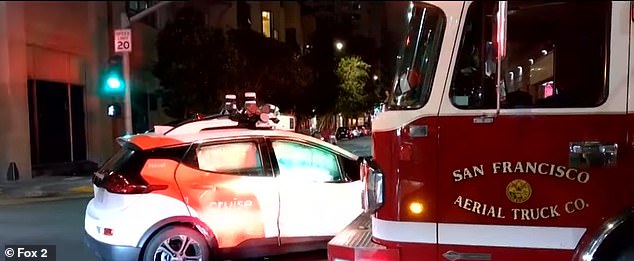
Cruise has been forced to cut its fleet of robotaxis in half after one of their vehicles crashed into a fire truck in San Francisco with a passenger on board
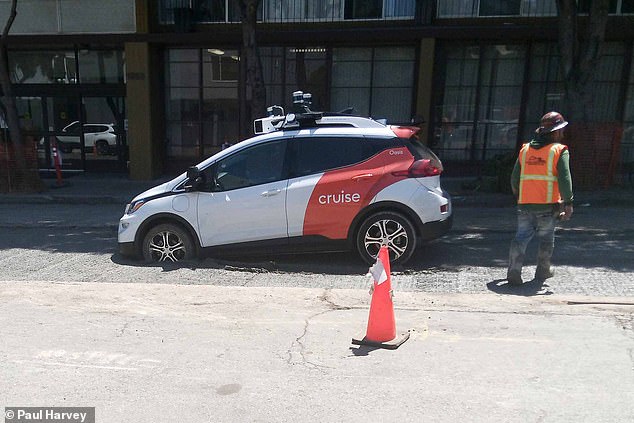
A self-driving car that hoped to revolutionize transportation in California has run into trouble again after driving straight into wet cement and getting stuck.
In early August, a journalist revealed that a ride in a self-driving car called ‘Peaches’ turned into a dystopian nightmare after the vehicle gained speed and refused to let him out.
Associated Press technical reporter Michael Liedtke was picked up outside a San Francisco bar by the self-driving Chevrolet Bolt, called Peaches.
Liedtke said the half-hour journey, conducted by Cruise, went smoothly until a “twist” left him worried that the experience would be something he would regret.
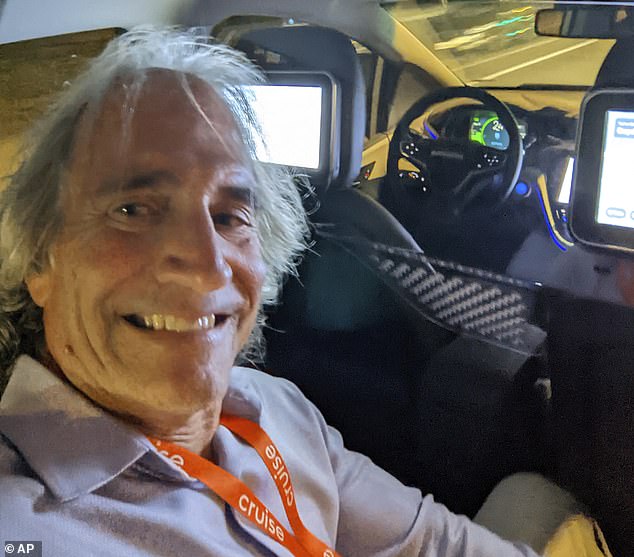
Associated Press tech reporter Michael Liedtke was taken hostage by a self-driving car and feared he would regret it. He was eventually released after vehicle hell
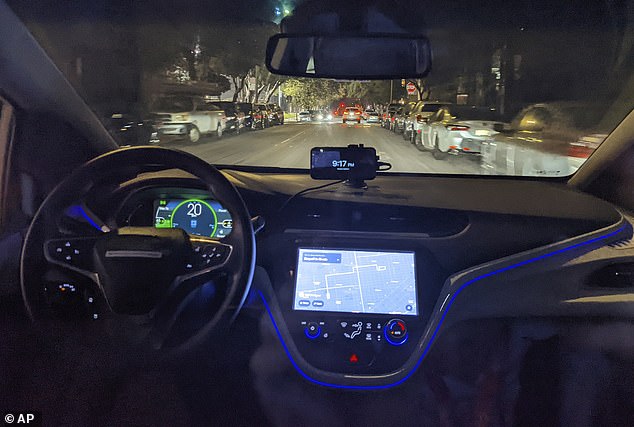
The empty driver’s seat is shown in a self-driving Chevy Bolt car named Peaches with Liedtke on board
In a report, Liedtke said that as he approached his destination, Peaches began to accelerate and pull away in the opposite direction.
After frantically calling the Cruise support center, they told him that Peaches had “got confused” and after the car returned him to the destination, he did the same. Liedtke eventually managed to escape from the vehicle hell.
In the state of California, at least 41 companies currently operate more than 2,000 autonomous vehicles.
And while most have test drivers inside, who can bridge the cars when needed, hundreds of vehicles on the road have no one behind the wheel.
